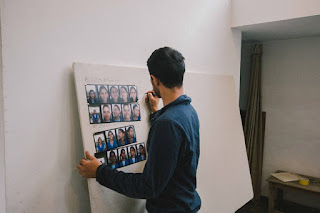Crafting Regionalism: Minnette De Silva and an Asian Modern Architecture
Anooradha Iyer Siddiqi
Assistant Professor and Faculty Fellow, New York University
In this talk, Professor Siddiqi engages with life history as a means
to delve into the culturally constructed field of architecture.
Few careers invite critical investigation of architecture’s complex
engagements with gender, labor, regional identity, and modernism in
South Asia as does that of Minnette De Silva, Royal Institute of
British Architects Associate and Sri Lankan Institute of Architects
Gold Medalist. While often credited as a pioneer of modern
architecture, and adhering to international modernist rhetoric as
espoused in the international circles within which she moved, her work
may be understood very differently in its localized contexts, and
through her complex biography.
De Silva’s buildings and writings illuminate an unexpected weaving
together of architectural heritage, nationalistic symbolism, and a
concern with the “Asian” modern.
Through an introduction to De Silva’s oeuvre, we may see how it
inflected a modern movement at the local, regional and international
levels, with interventions long credited to peers whose work has
appealed to more masculine or chauvinistic palates.
Anooradha Iyer Siddiqi
Assistant Professor and Faculty Fellow, New York University
In this talk, Professor Siddiqi engages with life history as a means
to delve into the culturally constructed field of architecture.
Few careers invite critical investigation of architecture’s complex
engagements with gender, labor, regional identity, and modernism in
South Asia as does that of Minnette De Silva, Royal Institute of
British Architects Associate and Sri Lankan Institute of Architects
Gold Medalist. While often credited as a pioneer of modern
architecture, and adhering to international modernist rhetoric as
espoused in the international circles within which she moved, her work
may be understood very differently in its localized contexts, and
through her complex biography.
De Silva’s buildings and writings illuminate an unexpected weaving
together of architectural heritage, nationalistic symbolism, and a
concern with the “Asian” modern.
Through an introduction to De Silva’s oeuvre, we may see how it
inflected a modern movement at the local, regional and international
levels, with interventions long credited to peers whose work has
appealed to more masculine or chauvinistic palates.

























